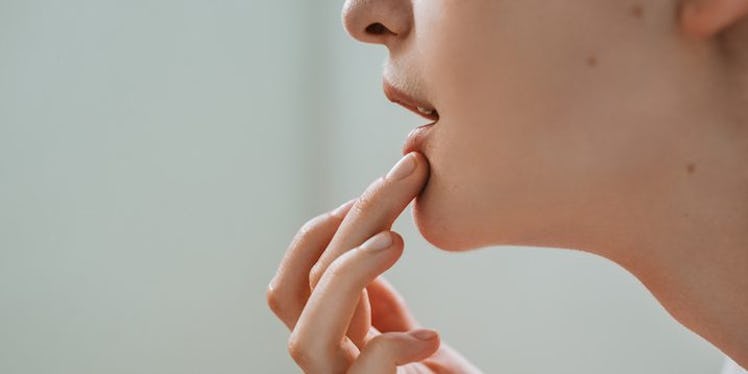
I Started Using Retin-A, And It's Basically The Poor Woman's Botox
With every passing 27th birthday — and there have been several — I'm reminded I'm not getting any younger.
Most of my friends (who are even younger than me) have already started using Botox, getting lip fillers and doing all kinds of shit to their faces.
Frankly, it scares the absolute crap out of me.
Maybe that's because I was raised by a woman who's never plucked her eyebrows, who used to wear overalls every day and who moved to Maine "to focus on her painting" once all her kids moved out.
I, however, happened to stumble into a city and a career that teaches something very different than what my mother taught me.
Instead of embracing my age, I'm told I should fight it with all the cosmetic warfare tools in the universe.
With another birthday rapidly approaching, I felt there had to be a way to combat my aging that didn't involve sticking needles in my forehead.
So, I made an appointment at my dermatologist office to figure out my options.
I had recently heard about something called Retin-A, and I knew of its non-prescription counterpart products that included the anti-aging ingredient retinol.
But, I didn't know much about either of them.
I reluctantly asked my dermatologist what they could do for me, and she showed me before-and-after Retin-A photos that I could've sworn were straight-up airbrushed.
There was no way a CREAM could do that for someone's face. The risk just didn't logically match up with the rewards.
I had always assumed that to get amazing skin, women had to sell at least a small piece of their souls to the devil.
And was I wrong? I mean, after all, getting Botox (to put it crudely) is INJECTING A TOXIN INTO YOUR FACE.
So, I had to ask, how did this miracle cream Retin-A work?
My doctor explained that though Retin-A was originally used to treat acne, it was later discovered the cream could reduce lines and pigmentation, minimize the appearance of pores and give the skin a more youthful appearance.
Retin-A is one of many topical prescription medications that uses tretinoin, an FDA-approved drug derived from Vitamin A that stimulates skin cell turnover.
It's basically a chemical peel on crack.
So, I decided to go for it, and I'm now four weeks into treatment.
I've been using the cream twice a week, and I've experienced a good amount of redness, peeling and skin sensitivity.
One night in the beginning of my treatment, I had to sleep with ice packs on my face, and I almost gave up on the whole thing.
But, I knew the peeling was a common side effect, so I took a few days off and waited for my face to basically "heal."
Then, I continued treatment.
While it's supposed to take up to eight weeks for Retin-A to work, I've already started to notice results.
First off, the texture and the tone of my skin has evened out. Areas that were darker have lightened up, and I've started getting carded when I try to buy cigarettes.
(I know, I should quit.)
The bottom line is, if you're someone who is considering an anti-aging treatment, Retin-A is an effective, not-so-extreme approach to get the results you want.
Plus, it's way less expensive than getting Botox injections every six months. One bottle of Retin-A can last about a year, and it cost me only $31 with insurance.
And listen, I'm not trying to sound like a commercial. I just want people to know you don't have to inject your face with needles if you're not comfortable with that.
There are other options that have more natural-looking results and that won't cost you the flexibility of that expressive face your mama gave you.